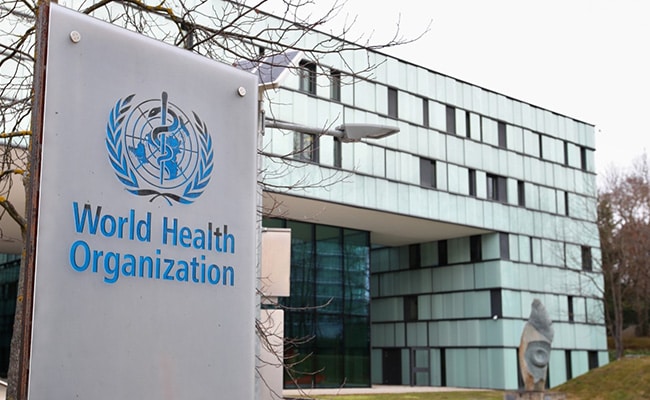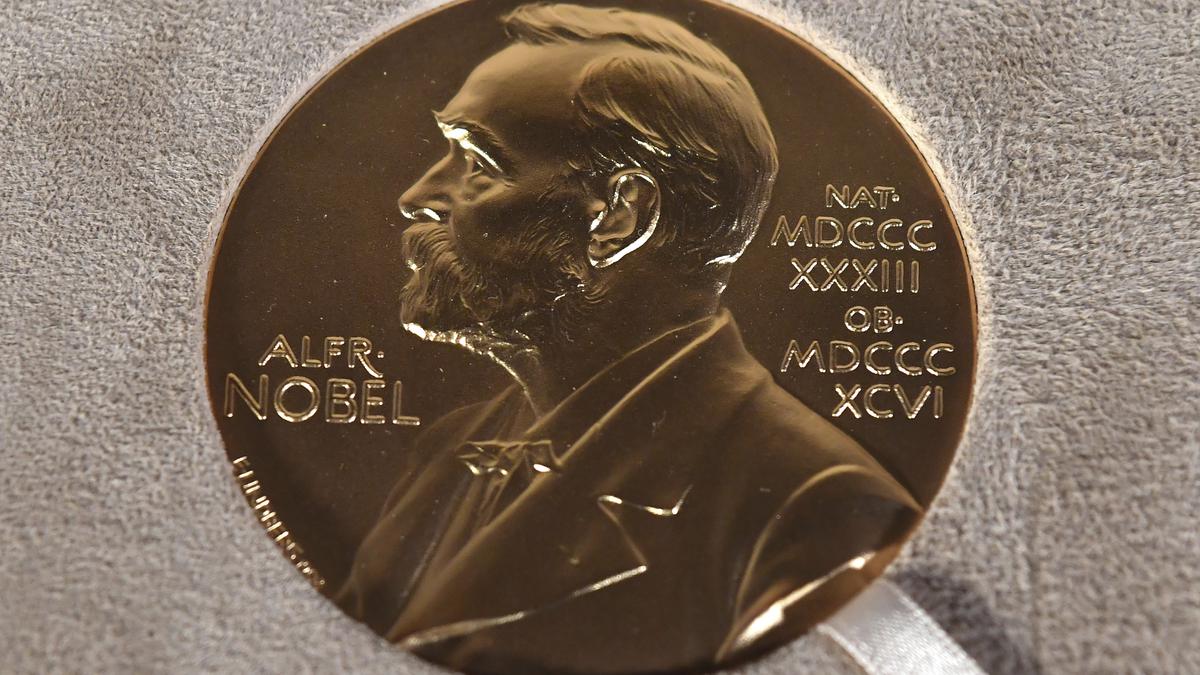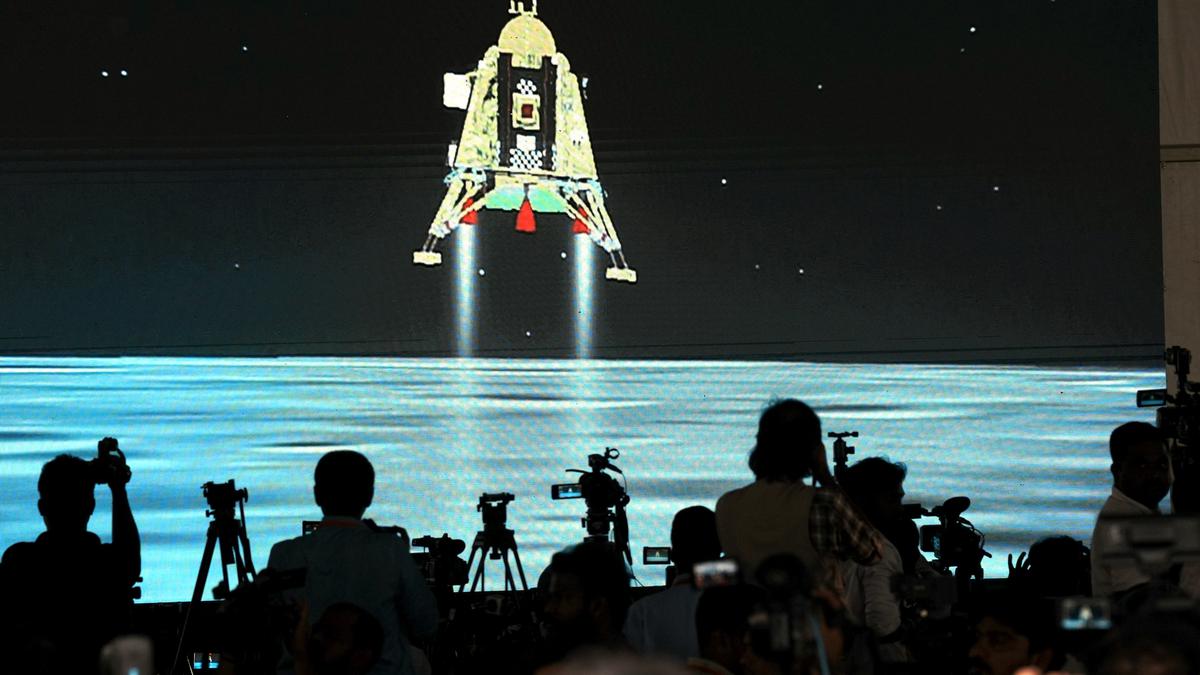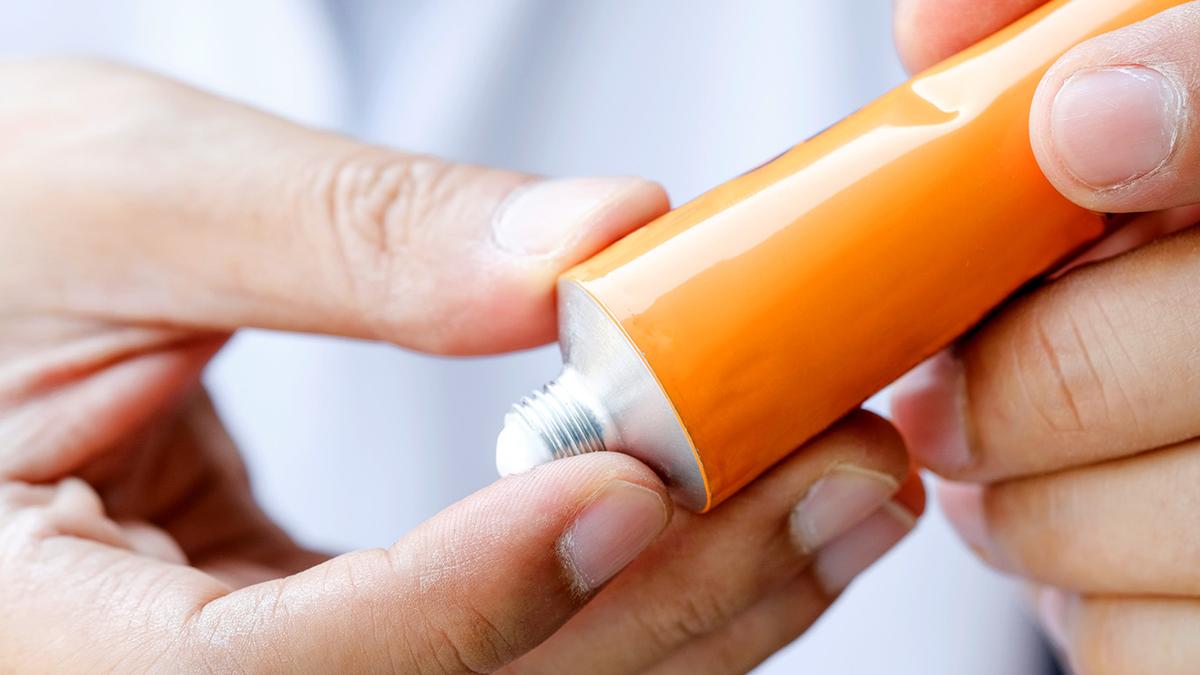V. Narayanan, who will take over as ISRO Chairman from January 14, poses near a model of the Chandrayaan-3 moon lander.
| Photo Credit: Special arrangement
V. Narayanan, a noted rocket and spacecraft propulsion expert, is set to succeed S. Somanath as the next Chairman of Indian Space Research Organisation (ISRO) at a time when India’s space sector is in reform-mode and the national space agency has major projects lined up including the Gaganyaan human spaceflight, the Chandrayaan-4 mission and the development of the country’s own space station.
Speaking to The Hindu on Wednesday (January 8, 2025), Dr. Narayanan, who has been heading the ISRO’s Liquid Propulsion Systems Centre (LPSC) since January 2018, described his upcoming assignment as a “great responsibility” as well as a “great opportunity to follow in the footsteps of stalwarts who led the ISRO over the decades.”

Given the ISRO’s busy calendar for 2025, Dr. Narayanan is quite aware that he has little to no time to rest on his laurels. “Towards January-end we have the GSLV Mk-II/IRNSS-1 K mission. We also have lined up the first of the uncrewed flights of the Gaganyaan programme, the G-1 mission, as well as a commercial launch using the LVM3 launch vehicle,” he said. “These apart, there are several experiments related to the Gaganyaan programme. So you see, we have our hands full,” he said.
High-profile programmes in the ISRO’s to-do list include the Chandrayaan-4 moon mission, the development of India’s own space station, the Bharatiya Antariksha Station, a second mission to Mars and the maiden Venus Orbiter Mission (VOM). While all of this may not happen during Dr. Narayanan’s tenure, the space agency has kicked off preparations.
As per the Union Cabinet’s Appointments’ Committee decision, Dr. Narayanan will take over as Secretary, Department of Space and Chairman, Space Commission, “for a period of two years” from January 14, 2025.

Dr. Narayanan, who who was born into a humble farming family in Kanyakumari district of Tamil Nadu, brings a ton of experience to the Chairman’s post, having joined the space agency in 1984 and worked in one of its core areas – rocket propulsion.
Increasing India’s presence in space tops his list of priorities, according to Dr. Narayanan. This is also an area where the space sector reforms that were set in motion a few years ago by opening it up to private players will play a vital role, he said.

“If you look at societal and strategic applications, today we have about 53 satellites in orbit. We need many more for communication, navigation and earth observation purposes. The ISRO on its own cannot meet this requirement. The reforms will help in this area. We have been giving opportunities to the private sector and the startup ecosystem,” he said.
Dr. Narayanan also drew attention to India’s plans to expand its share in the global economy from 2% to 10%. “So far we have not concentrated much on the space economy aspect. We need to have our due share, though. We are targeting 10%,” he said.
He reiterated the importance that the ISRO places on collaboration with other space agencies. “In our development stage as a space agency, indeed there was support. Today, all the spacefaring nations truly understand our abilities and strengths. Strength respects strength,” he said.

Increasing India’s presence in space tops his list of priorities, according to Dr. Narayanan.
| Photo Credit:
Special arrangement
Dr. Narayanan was born to C. Vanniyaperumal, a farmer, and S. Thangammal, a homemaker, in Melakattuvilai, a village in Kanyakumari district. He has three brothers and two sisters. Young Narayanan and his siblings studied in a Tamil medium school near their home. It was when Narayanan was in Class IX that their home got an electricity connection. He was a class X topper in his school.
Dr. Narayanan is an alumnus of the Indian Institute of Technology-Kharagpur. He obtained his M.Tech. in cryogenic engineering with a first rank in 1989 and a Ph.D. in aerospace engineering in 2001.
As a rocket propulsion expert, Dr. Narayanan has done important work on major ISRO missions and programmes including cryogenic technology, the moon (Chandrayaan 1, 2 and 3), Mars (Mangalyaan) and Aditya-L1 (to study the sun) missions and the upcoming Gaganyaan programme during a career spanning four decades.
On joining the ISRO on February 1, 1984, he initially worked on solid propulsion at the Vikram Sarabhai Space Centre (VSSC). In 1989, he moved to the LPSC to work on cryogenic propulsion. “His contributions made India one among six countries in the world to have the complex and high performance cryogenic propulsion systems and made it self reliant in this area. He has also finalised the Propulsion Road Map of ISRO for the next 20 years (2017-2037),” the LPSC has noted. At LPSC, his team has also been working on propulsion systems that use semi-cryogenic and electric propulsion technologies.
Dr. Narayanan is married to Kavitharaj N.K. The couple has a daughter, Divyaa, and a son, Kalesh.
Published – January 08, 2025 09:44 am IST










